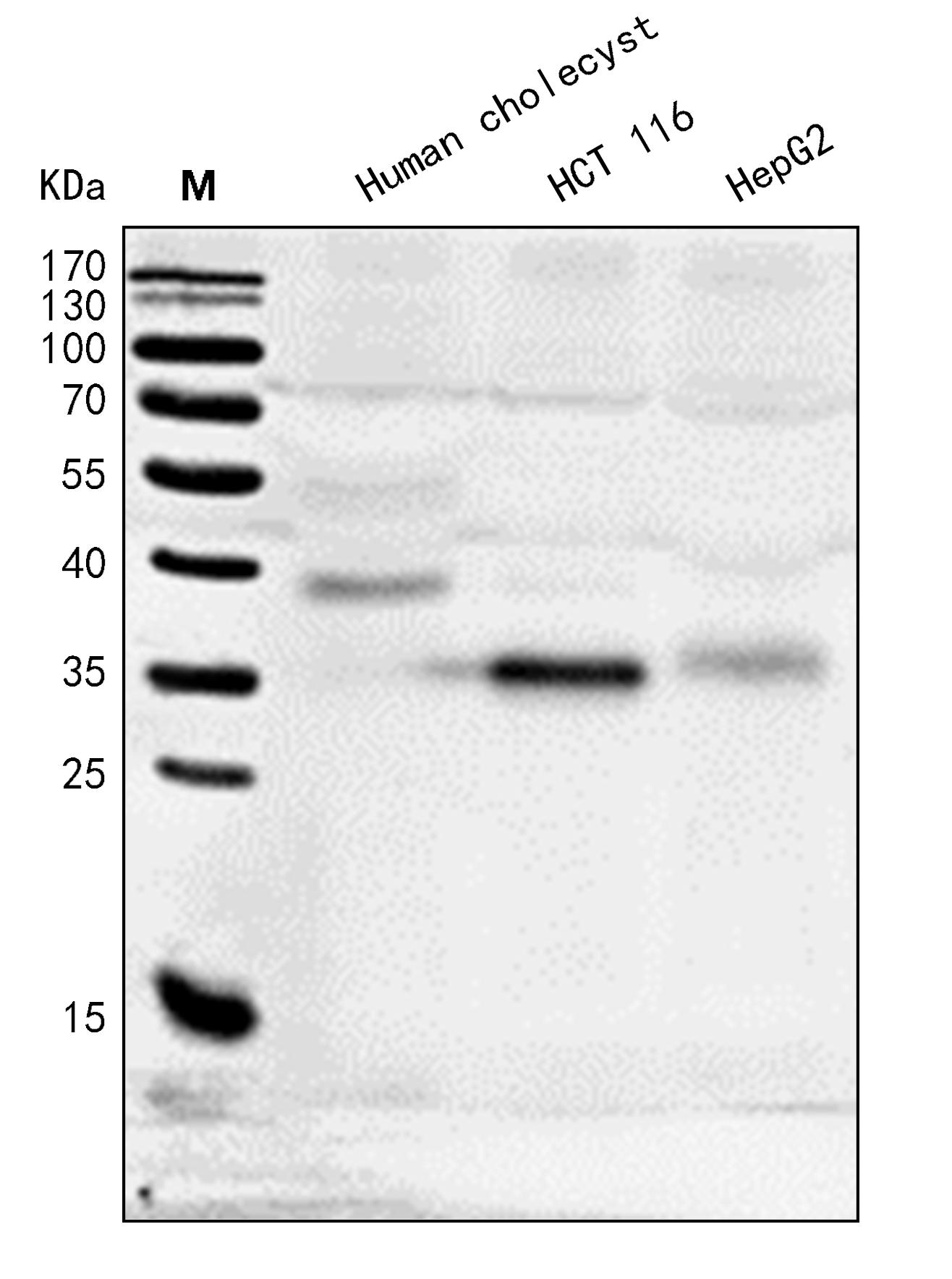
Anti-EPCAM Antibody, Rabbit Polyclonal
产品编号:PA00159HuA10
$ 询价
规格 50uL 100uL 200uL
产品名称:Anti-EPCAM Antibody, Rabbit Polyclonal
经验证的应用:WB/IF/ICC
交叉反应:/
特异性:human EPCAM
免疫原:Recombinant human EPCAM protein, fragment Gln24~Lys265; UniprotKB: P16422
制备方法:Produced in rabbits immunized with human EPCAM, and purified by antigen affinity chromatography.
来源:Polyclonal Rabbit IgG
纯化:Immunogen affinity purified
缓冲液:Supplied in PBS, 50% glycerol and less than 0.02% sodium azide, PH7.4
偶联物:Unconjugated
状态:Liquid
运输方式:This antibody is shipped as liquid solution at ambient temperature. Upon receipt, store it immediately at the temperature recommended.
储存条件:This antibody can be stored at 2℃-8℃ for one month without detectable loss of activity. Antibody products are stable for twelve months from date of receipt when stored at -20℃ to -80℃. Preservative-Free. Avoid repeated freeze-thaw cycles.
图片:
Figure1.Western blot analysis of extracts of various cell lines using EPCAM antibody (PA00159HuA10) at 1:1000 dilution. Lysates/proteins: 25ug per lane.Blocking buffer: 10% nonfat dry milk in TBST. Detection: ECL Basic Kit . Exposure time: 8.3s.
Figure2.Immunohistochemistry (Formalin/PFA-fixed paraffin-embedded sections) analysis of human thyroid cancer sections labelling EPCAM with purified PA00159HuA10 at 10ug/ml. Heat mediated antigen retrieval was performed using EDTA buffer (pH 9.0). Tissue was counterstained with Hematoxylin. Rabbit specific IHC polymer detection kit HRP/DAB secondary antibody was used at 1/4000 dilution. PBS instead of the primary antibody was used as the negative control.
别称:CD326, TACSTD1, EGP, KSA, M4S1, MIC18, TROP1, HEGP2, ESA, Epithelial glycoprotein, Adenocarcinoma-associated antigen, Tumor Associated Calcium Signal Transducer 1
背景信息:EpCAM/TROP1. Epithelial Cellular Adhesion Molecule (EpCAM), also known as KS1/4, gp40, GA733-2, 17-1A, and TROP‑1, is a 40 kDa transmembrane glycoprotein that consists of a 242 amino acid (aa) extracellular domain with two EGF‑like repeats, a 23 aa transmembrane segment, and a 26 aa cytoplasmic domain (1). Human and mouse EpCAM share 82% aa sequence identity. During embryonic development, EpCAM is detected in fetal lung, kidney, liver, pancreas, skin, and germ cells. In adults, human EpCAM is expressed on basolateral cell membranes of all simple, pseudo-stratified, and transitional epithelia but not on normal squamous stratified epithelia, mesenchymal tissue, muscular tissue, neuro-endocrine tissue, or lymphoid tissue (2). It is additionally expressed on undifferentiated embryonic stem cells, thymocytes, and dendritic cells (3-5). It is up-regulated on actively proliferating epithelial tissues, during adult liver regeneration, and on many epithelial cell-derived carcinomas (2, 6). EpCAM functions as a homophilic cell adhesion molecule (7). It associates into tetramers and forms complexes in cis with Claudin-7, CD44v6, TSPAN8, CD9, Integrin alpha 3, and Annexin A1 (8-11) that can interfere with cell adhesion (12, 13). Proteolytic cleavage of EpCAM releases multiple fragments from the ECD as well as a cytoplasmic fragment that can regulate gene transcription (14-16).
全称:Epithelial cell adhesion molecule (EPCAM)
说明书:
 |
说明书 |

